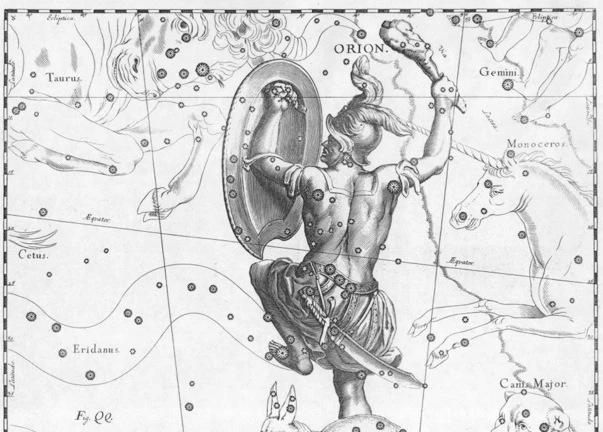Throughout history, civilizations across the globe have looked to the night sky for guidance, inspiration, and a deeper understanding of the world around them. The study of constellations has played a significant role in ancient cultures, shaping their beliefs, guiding their navigation, and even influencing their calendars. From Ancient Mesopotamia to Egypt, Greece to China, and the Americas, each civilization has had its own unique interpretation and utilization of constellations. In this article, we will delve into the fascinating role that constellations played in the ancient civilizations and explore their cultural, scientific, and spiritual significance. So, let’s embark on a celestial journey and discover the rich history of constellations in ancient times.
Ancient Mesopotamia
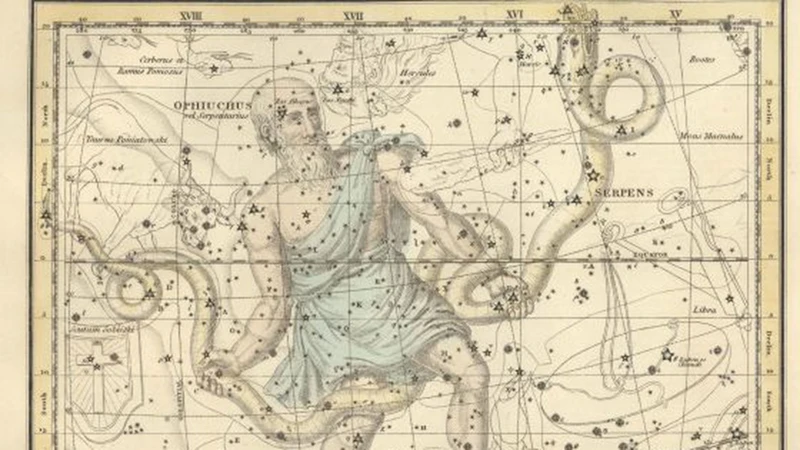
In Ancient Mesopotamia, constellations held a prominent place in the cultural and scientific fabric of the civilization. Cultural Beliefs and Mythology: The Mesopotamians believed that the gods resided in the heavens, and each constellation represented a deity or a mythical creature. These celestial beings were intricately connected to everyday life, guiding the fate of individuals and the destiny of kingdoms. The epic tale of Gilgamesh, one of the oldest known literary works, features references to constellations such as Orion and the Pleiades. Astrology and Astronomical Observations: Mesopotamians were particularly skilled in observing the night sky, making detailed recordings of celestial events, including planetary movements and eclipses. They believed that the celestial bodies had a direct influence on human affairs, a belief system that eventually laid the foundation for astrology. Through their observations, Mesopotamian astronomers established the first-known zodiac system, dividing the sky into twelve equal segments, each associated with a specific constellation. These ancient astronomers also discovered the precession of the equinoxes, a phenomenon that would later contribute to the development of modern astronomy. So, the constellations not only shaped the mythology and spiritual beliefs of the Mesopotamians but also allowed them to track and interpret the celestial movements with great precision. (Credit:Oort Cloud Mystery)
1. Cultural Beliefs and Mythology
In Ancient Mesopotamia, cultural beliefs and mythology intertwined with the constellations, shaping the way people perceived and interacted with the night sky. The Mesopotamians believed that the heavens were the domain of the gods, and each constellation represented a divine being or a mythical creature. These celestial entities were considered powerful and influential, holding sway over various aspects of human life. For example, the constellation Orion was associated with the hero Gilgamesh, a central figure in Mesopotamian mythology. The Pleiades, a cluster of stars in the constellation Taurus, was linked to the goddess Ishtar, symbolizing fertility and renewal. These connections between celestial patterns and deities played a crucial role in religious ceremonies, rituals, and even decision-making processes. The celestial mythology of the Mesopotamians often had a direct impact on their societal structure and political hierarchy. Kings and rulers saw themselves as custodians of these divine beings, drawing legitimacy and power from their association with the heavenly realm. The mythology surrounding the constellations not only enriched the spiritual beliefs of the Mesopotamians but also fostered a sense of wonder, awe, and reverence for the night sky. By studying the stars and understanding their mythological significance, the Mesopotamians sought a deeper understanding of themselves and their place in the world around them. (Credit: /influence-celestial-objects-astrology/)
2. Astrology and Astronomical Observations
Astrology and Astronomical Observations: In Ancient Mesopotamia, astrology played a significant role in understanding the impact of celestial objects on human destiny. Mesopotamian astronomers closely observed the movements and positions of the stars, planets, and other celestial bodies to make predictions and interpretations. They believed that the celestial objects exerted influence on various aspects of life, including personality traits, relationships, and even political events. Through meticulous astronomical observations, Mesopotamian astrologers developed a sophisticated system of omens and predictions based on the positions of the heavenly bodies. These observations allowed them to create astrological charts, known as horoscopes, which were used to determine an individual’s fate and provide guidance for important decisions. The Mesopotamians recognized a connection between celestial events and earthly occurrences, such as the correlation between the position of the planets and the timing of significant events. Their interest in celestial mechanics and observations paved the way for important discoveries in astronomy, such as understanding the movement of celestial bodies and the mechanics behind meteor showers. (Credit:The Celestial Mechanics Behind Meteor Showers)
Ancient Egypt
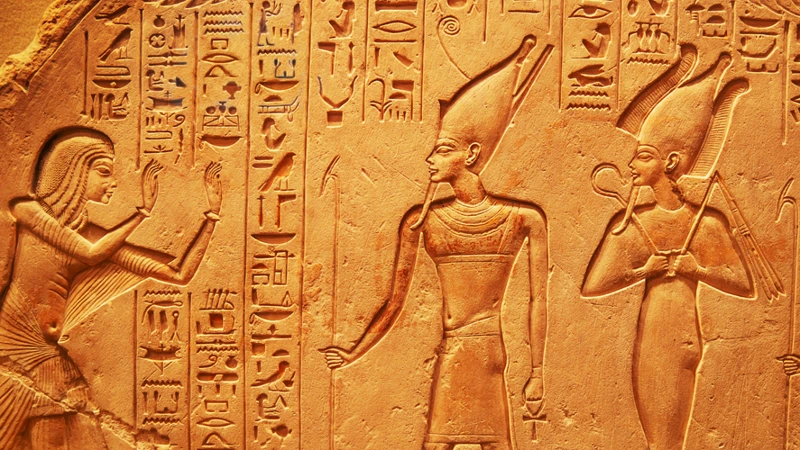
In Ancient Egypt, constellations held a profound significance, intertwining the divine and earthly realms. The Divine Connection: The ancient Egyptians believed that the stars were the souls of the gods and the afterlife. The constellation of Orion, known as Sah, was associated with Osiris, the god of the dead and resurrection. The rising of Orion marked the Nile flood, symbolizing rebirth and fertility. Similarly, the constellation Sirius, known as Sopdet, was linked to the goddess Isis and was used as a marker for the annual flooding of the Nile, signaling the start of the prosperous agricultural season. Stellar Navigation and Timekeeping: The Egyptians were skilled astronomers and used constellations for practical purposes as well. They utilized the movement of certain star patterns, such as the Big Dipper, to navigate the vast desert and waterways. Constellations also played a crucial role in their calendar, with the rising of specific stars indicating the beginning of agricultural seasons and religious festivals. The construction of monumental structures, such as the Great Pyramids, was influenced by the alignment of certain constellations, reflecting the cosmological beliefs and divine connections of the ancient Egyptians. Thus, constellations were not only a source of spiritual guidance but also served as practical tools for navigation and timekeeping in the civilization of Ancient Egypt.
1. The Divine Connection
The ancient Egyptians believed in a profound connection between the constellations and the divine realm. They saw the night sky as a reflection of the gods and their influence on earthly affairs. The Egyptians associated specific constellations with their deities, attributing different qualities and characteristics to each celestial figure. For example, the constellation Orion was linked to the god Osiris, the ruler of the afterlife, while Sirius, the brightest star in the sky, was connected to the goddess Isis, a symbol of fertility and motherhood. These divine associations played a significant role in religious ceremonies, architectural designs, and even daily life. The Egyptians often aligned their temples and structures with specific constellations, believing that it would bring forth the blessings and protection of the associated deity. They also used the movement of the stars to determine auspicious times for important events such as coronations and agricultural activities. The concept of the divine connection to the constellations permeated every aspect of Egyptian society, showcasing the profound impact that these celestial bodies had on their spiritual beliefs and practices.
2. Stellar Navigation and Timekeeping
2. Stellar Navigation and Timekeeping: In Ancient Egypt, constellations were not only revered for their mythical and divine symbolism but were also used for practical purposes such as navigation and timekeeping. The Egyptians, particularly skilled in astronomy, recognized the annual flooding of the Nile River as a vital event for agriculture, and the ability to accurately predict it was crucial. By observing the movements of certain constellations, such as Sirius, the brightest star in the night sky, they could anticipate the onset of the flood. Additionally, the constellation Orion served as a guide for navigation, as it aligned with true north and south. The Egyptians developed methods to determine the time of year and the hours of the night using the position of stars. They divided the night into twelve equal parts, with each division corresponding to the prominence of specific constellations at different times. This practice eventually laid the foundation for our modern system of dividing time into hours. The celestial knowledge possessed by the Egyptians greatly aided their agricultural practices and facilitated efficient trade and travel along the Nile River. It is a testament to the ingenuity and sophistication of the ancient civilization that they were able to harness the power of constellations for practical purposes such as navigation and timekeeping. (Credit: The Celestial Mechanics Behind Meteor Showers)
Ancient Greece
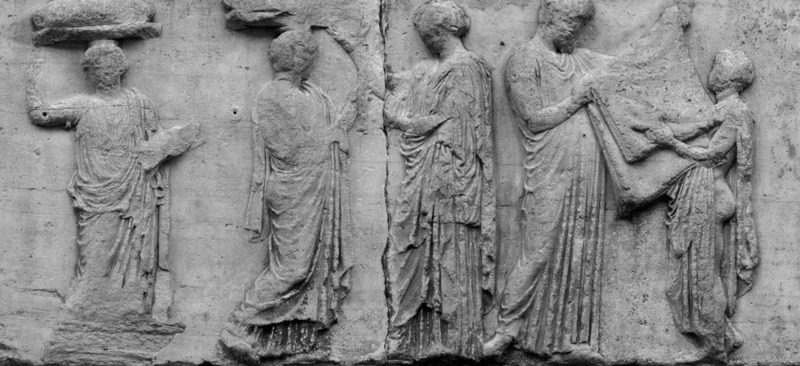
In Ancient Greece, the significance of constellations encompassed both mythological and scientific realms. Deities and Legends: Greek mythology is replete with stories involving constellations, where these celestial patterns were believed to represent gods, heroes, and mythical creatures. For example, Orion, prominent in Greek mythology, was said to be a great hunter turned into a constellation by the gods. The constellation Perseus was associated with the hero who slayed the Gorgon Medusa. These stories not only entertained the Greeks but also provided a framework for understanding the natural world and the divine. Scientific Advances and Philosophy: In addition to their mythological significance, the Greeks made substantial contributions to the field of astronomy. Prominent philosophers and astronomers such as Thales, Anaximander, and Hipparchus developed theories about the celestial bodies and their movements. Hipparchus, often hailed as the father of observational astronomy, compiled the first comprehensive star catalog and discovered the precession of the equinoxes. The Greeks also theorized about the nature of the universe itself, proposing that the Earth was round and speculating about its place in the cosmos. They recognized patterns and named constellations, laying the foundation for the modern system of star maps and navigation. So, for the ancient Greeks, constellations were not only mythological figures but also inspired scientific inquiry and philosophical contemplation. (Credit: /the-celestial-mechanics-behind-meteor-showers/)
1. Deities and Legends
In Ancient Greece, constellations held great significance in their mythology and religious beliefs. Each constellation was associated with a specific deity or mythical figure, creating a celestial connection between the heavens and Earth. Zeus: The mighty Greek god Zeus was often associated with the constellation of the eagle, which represented his majesty and power. Hera: The goddess Hera was linked to the peacock constellation, symbolizing her regal beauty and elegance. Perseus and Andromeda: The story of Perseus and Andromeda is intertwined with the constellations that bear their names. Perseus, the hero who slayed Medusa, is represented in the night sky by the constellation Perseus. Andromeda, the princess he saved, is portrayed by the constellation Andromeda, which tells the tale of her eventual rescue. Orion: The legendary hunter Orion is one of the most recognizable constellations and has numerous myths associated with it. According to Greek mythology, Orion was a giant and a skilled hunter who was eventually placed among the stars by Zeus. These are just a few examples of the rich mythology and stories that revolve around the constellations in Ancient Greece. These legends not only entertained and inspired the Greeks but also provided a framework for understanding the cosmos and the role of gods and heroes within it. (Credit: Influence of Celestial Objects in Astrology)
2. Scientific Advances and Philosophy
Ancient Greece was a hub of scientific advances and philosophical thinking, and the study of constellations played a significant role in these intellectual pursuits. Greek philosophers, such as Thales, Pythagoras, and Aristotle, sought to understand the celestial realm and its connection to the earthly realm. They believed that the movements of the stars and planets held valuable insights into the nature of the universe.
One of the notable scientific advances of Ancient Greece was the development of a geocentric model of the universe, where the Earth was believed to be at the center, surrounded by concentric spheres carrying the celestial bodies. This model, proposed by Eudoxus and further refined by Aristotle and Ptolemy, provided a framework for understanding the motion of the planets and the stars.
The philosopher and mathematician, Pythagoras, also made significant contributions to the study of constellations. He founded the Pythagorean School and believed in the concept of a harmonious cosmos, where the movements of the celestial bodies were seen as musical and mathematical. Pythagoras believed that the positions and arrangements of the stars formed a divine celestial harmony, akin to the harmony found in music. This belief system deeply influenced the understanding and interpretation of constellations during that era.
The ancient Greeks were known for their meticulous observations of the night sky. Hipparchus, an astronomer from the Hellenistic period, made groundbreaking discoveries in the field of astronomy. He developed a system to measure the brightness of stars, which is still used today and known as the magnitude system. Hipparchus also compiled one of the earliest known star catalogs, containing the positions and magnitudes of more than a thousand stars.
In addition to scientific advancements, Greek philosophy also played a role in the interpretation of constellations. The legendary philosopher Plato utilized the concept of the “World Soul” to connect the stars and the human soul. He believed that the order and harmony of the celestial bodies reflected the order and harmony within the human soul.
The scientific advances and philosophical inquiries of ancient Greece significantly influenced the understanding and interpretation of constellations. The Greek scholars’ pursuit of knowledge and their fascination with the night sky laid the groundwork for future scientific breakthroughs and philosophical discussions that continue to shape our understanding of the universe today. (Credit: The Celestial Mechanics Behind Meteor Showers)
Ancient China
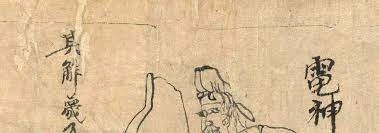
In Ancient China, constellations held significant importance in both celestial divination and the creation of astrological calendars. Celestial Divination: The ancient Chinese believed that celestial events, such as the movement of stars and the appearance of comets, were signs of divine intentions and could foretell the future. Astrologers meticulously observed and interpreted these celestial phenomena, associating specific constellations with different aspects of life and predicting the fate of individuals and the empire. The Chinese also developed intricate systems, such as the Four Symbols and the Twenty-Eight Mansions, which divided the night sky into distinct sections represented by constellations and were used for making predictions. Astrological Calendars: Ancient Chinese astronomers were expert timekeepers. They developed calendars based on the movement of celestial bodies, particularly the sun, moon, and constellations. These calendars assisted in agriculture, seasonal changes, and important cultural events. The Chinese Zodiac, consisting of twelve animal signs associated with specific constellations, played a significant role in determining personal characteristics, compatibility, and fortune. The alignment of constellations with specific months and years was essential for understanding astrological influences and guiding individuals’ lives. The ancient Chinese’s rich understanding of constellations led to the development of sophisticated divination practices and the creation of astrological calendars that influenced various aspects of their society and culture.
1. Celestial Divination
Celestial divination played a significant role in ancient China, where the study of celestial objects was intricately linked to the spiritual and philosophical beliefs of the civilization. Chinese astronomers believed that the movement and positioning of celestial bodies held valuable insights into the future and the fate of individuals, as well as the ruling dynasty. They developed complex systems of divination based on the observation of celestial events, such as comets, meteor showers, and eclipses. These celestial occurrences were seen as messages from the divine realm, signifying important events or changes in the earthly realm.
One of the most well-known methods of celestial divination in ancient China was the study of comets. Comets were regarded as omens and were believed to herald significant events or the rise and fall of rulers. Chinese astronomers meticulously observed the appearance, position, and direction of comets, recording their findings in historical texts. The sighting of a comet was considered a vital moment for the emperor, as it was believed to be an indication of his mandate to rule.
Another form of celestial divination practiced in ancient China was the interpretation of meteor showers. Chinese astronomers believed that meteor showers were the result of the interaction between the celestial and earthly realms. These phenomena were seen as messages from the heavens, conveying warnings, blessings, or guidance. The observation and interpretation of meteor showers were integral to the belief in cosmic harmony and the pursuit of balance between heaven and earth.
Additionally, eclipses held great significance in Chinese celestial divination. Solar and lunar eclipses were considered celestial disturbances that required interpretation. The alignment of the sun, moon, and earth during an eclipse was seen as a reflection of the balance of yin and yang, the fundamental forces in Chinese philosophy. It was believed that eclipses represented a disruption in this balance and were therefore seen as potent omens, often associated with political changes, natural disasters, or the death of a ruler.
The practice of celestial divination in ancient China was not only rooted in spiritual beliefs but also had practical implications. The interpretation of celestial events played a crucial role in decision-making, whether it was determining the auspicious timing for ceremonies, predicting crop yields, or guiding military strategies. Chinese astronomers meticulously observed and recorded celestial phenomena, creating a wealth of astronomical knowledge that formed the basis for the development of astrological calendars and almanacs. These calendars outlined the positions of celestial bodies, conjunctions, and other astronomical events, providing guidance for various aspects of life, including agriculture, government affairs, and personal matters.
Celestial divination was an integral part of ancient Chinese culture, influencing not only their spiritual beliefs but also their daily lives. The study of celestial objects allowed the Chinese civilization to connect with the heavens, seek guidance from the divine, and navigate the complexities of their society. (Credit: The Celestial Mechanics Behind Meteor Showers)
2. Astrological Calendars
Astrological calendars held immense importance in ancient China, providing a way to track celestial events and align human activities with the rhythms of the heavens. These calendars were based on the movements of the sun, moon, and stars, and were used for both agricultural and divinatory purposes. Chinese Zodiac: One of the most well-known aspects of the Chinese astrological calendar is the Chinese zodiac, which assigns each year to a specific animal sign. The zodiac cycle consists of twelve animal signs, including the Rat, Ox, Tiger, Rabbit, Dragon, Snake, Horse, Sheep, Monkey, Rooster, Dog, and Pig. Each animal sign is believed to have specific characteristics and influences on individual personalities and life events. Yin and Yang: Another significant concept within the Chinese astrological calendar is the principle of Yin and Yang. This concept represents the duality and interconnectedness of all things in the universe. The Yin and Yang energies were also associated with specific animal signs, elements, and celestial stems, creating a complex system of determining auspicious dates, relationships, and compatibility between individuals. Festivals and Auspicious Dates: The astrological calendar guided the scheduling of important events and festivals in ancient China. Certain dates were considered more auspicious for weddings, business endeavors, and personal matters, while others were perceived as inauspicious and avoided. The movements of the constellations and celestial bodies were closely observed to determine the best dates for specific activities to ensure good luck and success. The development of astrological calendars in ancient China not only shaped the lives of individuals but also influenced the timing of important events and the cultural practices of the civilization.
Ancient Americas
The civilizations of the Ancient Americas, including the Maya and the Inca, also had a deep connection to the constellations. Maya Civilization and the Long Count: The Maya people of Mesoamerica possessed an advanced understanding of astronomy, which they used to track the movements of celestial bodies. They developed a precise calendar system known as the Long Count, which was based on the cyclical patterns of the stars and planets. The Maya constructed elaborate observatories and monuments aligned with specific celestial events, such as solstices and equinoxes. These astronomical observations played a crucial role in religious rituals, agricultural planning, and societal organization. Inca Astronomy and Agricultural Calendar: Similarly, the Inca civilization of South America had an intricate system of celestial observation that directly influenced their agricultural practices. The Inca believed that the Sun was the creator deity, and the movements of the stars and planets were regarded as messages from the gods. They developed an agricultural calendar based on the position of constellations, which helped them determine the optimal times for planting and harvesting crops. The Inca also constructed impressive stone structures, like Machu Picchu and other celestial observatories, which were aligned with important astronomical events. These structures demonstrate the profound influence that constellations had on the agricultural, religious, and architectural aspects of the Ancient American civilizations, emphasizing the vital role of celestial bodies in their society.
1. Maya Civilization and the Long Count
1. Maya Civilization and the Long Count: The Maya civilization, renowned for its advanced understanding of astronomy, developed a remarkable system known as the Long Count to track time. The Long Count was an elaborate calendar system that allowed the Maya to record and predict celestial events with remarkable accuracy. It consisted of five periods of time: the kin (1 day), the uinal (20 days), the tun (360 days), the katun (7,200 days), and the baktun (144,000 days). Together, these periods created a cyclical calendar that could span thousands of years. The Long Count not only served as a practical tool for tracking time but also played a crucial role in Maya cosmology and religious rituals. The Maya believed that each baktun represented a world age, and the end of a baktun marked a significant transition or transformation in their worldview. In fact, the completion of 13 baktuns, known as the “Great Cycle,” was associated with a major event that known as the December 21, 2012 phenomenon. Despite popular misconceptions, the Maya did not prophesy the end of the world but rather viewed this event as a time of renewal and rebirth. The Long Count’s precision in tracking celestial cycles demonstrates the Maya’s deep understanding of astronomy and their ability to integrate it into their daily lives and belief systems.
2. Inca Astronomy and Agricultural Calendar
The ancient Inca civilization, known for its remarkable advancements in architecture, engineering, and agriculture, also had a deep understanding and reliance on astronomy. The Incas, who thrived in the Andes Mountains of South America, possessed an intricate agricultural calendar that was closely tied to celestial observations. They believed that the movements of the sun, moon, and stars directly influenced the success of their crops and the overall well-being of their society.
The Inca astronomers meticulously observed the celestial bodies and developed an incredibly accurate calendar that guided their agricultural practices. They studied the position and movements of the sun and moon, as well as the Pleiades and planets like Venus. These astronomical observations allowed them to determine the optimal times for planting and harvesting their crops, ensuring bountiful yields. They also recognized the significance of the solstices and equinoxes, marking important agricultural events and conducting rituals accordingly.
One of the most impressive examples of Inca astronomy can be seen in their architectural masterpiece, Machu Picchu. This ancient city was constructed in alignment with celestial phenomena, such as the path of the sun during the solstices. These architectural features not only showcased the Incas’ astronomical knowledge but also served practical purposes such as predicting weather patterns and assisting with irrigation systems.
In addition to agriculture, the Incas also used the stars as a navigational tool. They had a keen understanding of the celestial movements, enabling them to navigate the vast Andean landscape and establish an extensive network of roads and communication systems.
The Inca civilization’s intricate understanding of astronomy and its direct application to agriculture played a vital role in sustaining their society. Their ability to accurately predict astronomical events and incorporate them into their daily lives highlights the significant impact that constellations and celestial observations had on the Inca civilization. (Credit: Influence of Celestial Objects in Astrology)
Conclusion
In conclusion, the role of constellations in ancient civilizations cannot be overstated. These celestial patterns served as a source of inspiration, a tool for navigation, a guide for timekeeping, and a means of understanding the divine and the natural world. From Mesopotamia to Egypt, Greece to China, and the ancient Americas, constellations held a central place in the cultural, religious, and scientific practices of these civilizations. Whether it was the Mesopotamians’ belief in the connection between constellations and deities, the Egyptians’ use of constellations for celestial navigation and timekeeping, the Greeks’ exploration of the stars through their myths and philosophical ideas, or the intricate astronomical systems developed by the Chinese and the ancient American civilizations, constellations were instrumental in shaping the worldview and experiences of these ancient cultures. The study of constellations not only reflects humanity’s fascination with the cosmos but also highlights the ingenuity and curiosity of these ancient civilizations in their quest to understand and connect with the celestial realm. Even in the present day, we continue to marvel at the beauty and significance of these stellar patterns, reminding us of the enduring legacy of ancient civilizations and the timeless wonder of the night sky.
Frequently Asked Questions
1. Why were constellations important in ancient civilizations?
Constellations held great importance in ancient civilizations as they were believed to represent deities, mythical creatures, and held connections to everyday life. They guided cultural beliefs, influenced astrology, and played a role in navigation and tracking time.
2. How did ancient Mesopotamians view constellations?
Ancient Mesopotamians believed that constellations represented gods and goddesses, and their movements and alignments held significant meaning for human affairs. They incorporated constellations into their mythology and utilized them in astronomical observations and astrology.
3. What is the relationship between constellations and astrology?
In many ancient civilizations, constellations were considered to have a direct influence on human affairs, forming the basis of astrology. The positions of the celestial bodies were believed to impact individuals’ personalities, destinies, and the overall fate of societies.
4. How did ancient Egyptians utilize constellations?
Ancient Egyptians revered the nighttime sky and associated various constellations with their gods and goddesses. They used the movement of constellations for navigation along the Nile River and also incorporated them into their agricultural calendar to predict flood cycles.
5. What role did constellations play in ancient Greek culture?
Constellations held both mythical and scientific significance in ancient Greek culture. Greek legends and deities were often associated with specific constellations, and Greek astronomers made significant advancements in studying the stars and their movements.
6. How did ancient Chinese civilizations interpret constellations?
Ancient Chinese civilizations used constellations for celestial divination, connecting the positions of the stars with human destiny. They also developed intricate astrological calendars based on the movement of constellations to guide their agricultural practices and important events.
7. What were some astronomical achievements of ancient civilizations?
Ancient civilizations made several notable achievements in astronomy. They tracked planetary movements, discovered phenomena like the precession of equinoxes, and developed sophisticated calendars based on celestial observations.
8. How did the Mayans incorporate constellations into their civilization?
The Mayans had a deep understanding of celestial movements and incorporated constellations into their religious beliefs and calendar systems. The Long Count calendar, highly influenced by celestial events, played a crucial role in their society.
9. What role did constellations play in Inca civilization?
Constellations were integral to Inca agriculture and timekeeping. The Inca civilization used constellations to develop their agricultural calendar, which allowed them to track the seasons and determine optimal times for planting and harvesting crops.
10. How has our understanding of constellations evolved over time?
Our understanding of constellations has evolved significantly over time. Modern astronomy has revealed the scientific composition and distances of stars within constellations, debunking some of the ancient mythological interpretations while enhancing our knowledge of the expansive universe beyond.

